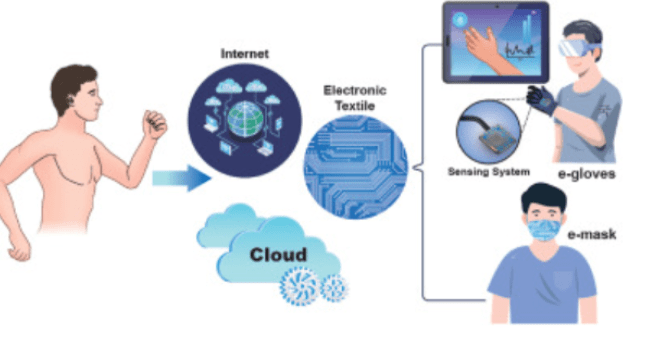What if your jacket could sense your mood… your shoes could tell you when to rest… or your very skin could glow in response to danger? This is not a sci-fi fantasy—it’s the dawn of Digital Skin, and it’s already starting to redefine what it means to be human.
By 2030, wearable surfaces that think, feel, and respond could replace smartphones, revolutionize healthcare, and even challenge human touch itself. It’s creepy. It’s brilliant. And it’s going to change your life in ways no one’s ready for.
Let’s peel back the layers of this groundbreaking technology—what it is, how it works, and why the world may never look or feel the same again.
🤖 What Is Digital Skin?
Digital skin—also known as e-skin, smart skin, or electronic epidermis—is a futuristic, ultra-thin layer of synthetic material embedded with sensors, processors, and adaptive elements. It mimics the properties of human skin: sensing pressure, temperature, movement, and even emotion.
But it goes far beyond biology.
These wearable surfaces can think, process data in real time, connect to the cloud, and respond with intelligent feedback. Some models even heal themselves, like real skin, when torn or damaged.
Researchers at institutions like Stanford, MIT, and KAIST have already created working prototypes that:
- Light up when touched
- Monitor vital signs with medical-grade accuracy
- Stretch, bend, and flex with your body
- Interact with devices just through contact
🔥 Why Everyone’s Suddenly Talking About It
Digital skin isn’t just tech for tech’s sake. It’s solving some of the biggest problems in health, safety, communication, and human enhancement.
1. It Can Replace Screens
Say goodbye to bulky phones, watches, and even VR goggles. Digital skin can project content directly onto your arm, respond to taps, swipes, or gestures, and even vibrate or pulse for notifications.
2. It’s a Health Revolution
E-skin can detect:
- Blood oxygen levels
- Dehydration
- Irregular heartbeats
- Stress indicators like cortisol
This could make doctor visits more accurate—or even unnecessary.
3. It Brings Human-Robot Interaction to Life
In robotics, digital skin allows machines to feel touch, detect pressure, and interact safely with humans. Robots with e-skin could one day be capable of empathetic caregiving, or performing delicate surgeries with the gentleness of a human hand.
🧠 How Digital Skin Actually Works
While the idea sounds magical, the science is even more impressive. Digital skin is made from stretchable polymers layered with:
- Piezoelectric sensors to detect pressure and motion
- Thermal sensors to respond to temperature
- Electrodes and microprocessors to analyze data
- AI chips to learn from touch and motion patterns
Some e-skins even include haptic actuators, which let them vibrate or provide feedback—imagine your arm subtly buzzing when your heart rate spikes or your posture slouches.
This data can be transmitted via Bluetooth, 5G, or even quantum channels, and stored securely for health tracking, fitness, communication, or control.
🧬 Real-Life Applications That Feel Like Magic
Let’s explore how digital skin is already being tested or imagined in real-world scenarios:
🏥 Medical Miracles
- Digital Bandages: Monitor healing and release medication directly through the skin.
- Stroke Recovery Tools: Give biofeedback to help patients regain movement.
- Diabetes Management: Real-time blood glucose monitoring through painless dermal sensors.
🏃 Fitness & Lifestyle
- Smart Athletic Wear: Track hydration, heart rate, and fatigue across muscle groups.
- Mood-Sensing Clothing: Adjust lighting, sound, or temperature based on emotional state.
👩🔬 Military & Safety
- Hazard Detection: Surfaces that detect toxins, radiation, or damage in battle zones.
- Augmented Tactile Feedback: Gloves that let soldiers feel textures or forces in remote operations.
🧑💻 Post-Smartphone Interfaces
- Touchable Notifications: No screens. Just a pulse or a glow on your forearm.
- Gesture Control: Type or scroll mid-air, your arm acting as the interface.
🌍 Who’s Building the Future of Digital Skin?
Major players in tech and biotech are racing to own this frontier:
- Samsung has unveiled bendable, skin-mimicking displays.
- Google is researching smart tattoos (Project SkinMarks).
- Xenoma, a Tokyo-based startup, already sells smart pajamas with e-skin sensors.
- MIT Media Lab is pushing boundaries with wearable AI mesh networks.
Even DARPA is investing in “tactical e-skin” for soldiers to enhance performance and survivability.
💥 The Risks No One Is Talking About
This technology is powerful. But it’s also… terrifying.
🔓 Hacking the Human Body
If digital skin connects to your health and motion data, hackers could:
- Track your movements
- Steal your biometric identity
- Interfere with your body’s signals
🧠 Mental Health Concerns
Constant monitoring could increase anxiety, obsession, or even digital body dysmorphia—where users obsess over performance metrics shown by their skin.
📜 Legal & Ethical Minefields
If your skin collects data, who owns it? You? The company? Your insurer?
⏳ Will Digital Skin Replace Smartphones?
It’s not just possible. It’s probable.
With AI integration, augmented projections, and cloud syncing, your digital skin could:
- Replace your wallet
- Replace your ID
- Replace your screen
- Replace your voice assistant
By 2030, smartphones might look like clunky relics of a forgotten era—much like pagers and Walkmans.
And if regulators start banning smartphones (as predicted), digital skin will be the next evolution in personal computing.
📅 What’s Next? 2030 and Beyond
Here’s what’s on the horizon:
- 2025: High-end athletes and medical patients begin widespread e-skin use
- 2026–2028: Retail products like smart gloves and responsive clothing become mainstream
- 2029: AR integration becomes a core feature
- 2030: First fully functional “digital body suit” replaces screens and wearables for early adopters
✅ Conclusion: The Age of Digital Skin Is Coming
We are no longer just users of technology—we are becoming part of it. Digital skin isn’t just about convenience or innovation. It’s about a redefinition of our very senses, our identity, and our place in a connected world.
Are we ready to wear our thoughts, feel our data, and touch the digital realm as if it were real?
By 2030, the answer won’t matter. Because digital skin will already be here—and the world will feel very different.
❓FAQs: Digital Skin and Wearable Surfaces
Q1: Is digital skin available now?
Some early-stage versions exist for medical and research use. Consumer versions are expected within the next 3–5 years.
Q2: Can digital skin replace phones?
Yes. With embedded AI and cloud connectivity, digital skin can perform many smartphone functions—more intuitively and invisibly.
Q3: Is it safe to wear?
Current prototypes use biocompatible materials, but long-term safety is still under study. Security from hacking is a major concern.
Q4: Will it be expensive?
At launch—yes. But as production scales and tech evolves, expect prices to drop significantly by 2028–2030.
Q5: What companies are leading in this space?
Samsung, Google, Xenoma, MIT, Stanford, and several defense agencies are pioneers.
Q6: Can I remove digital skin anytime?
Yes. Most versions are detachable or washable—though future implants may be semi-permanent.
Q7: Will people accept this?
As with all disruptive tech, early adoption will be niche. But functionality, personalization, and convenience will win people over—just like smartphones did.



